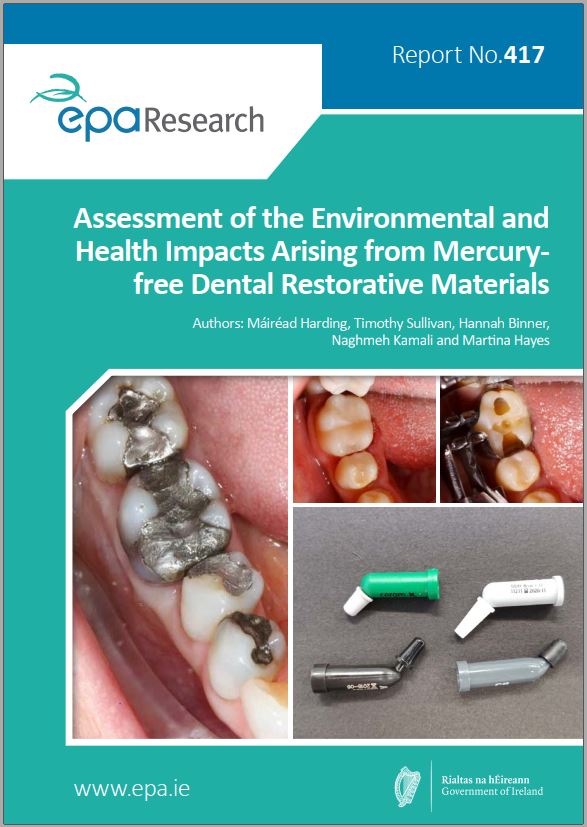Research 417: Assessment of the Environmental and Health Impacts Arising from Mercury-free Dental Restorative Materials
Authors: Máiréad Harding, Timothy Sullivan, Hannah Binner, Naghmeh Kamali and Martina Hayes
Summary: The United Nations Minamata Convention on Mercury is an international regulatory framework that aims to protect human health and the global environment from the harmful effects of mercury. This research identified that very little literature exists on the environmental and health impacts of mercury-free dental restorative materials. It identified small particles from the mercury-free dental restorative materials in dental wastewater (DWW) and says it is essential to consider enhanced capture of small particles from DWW as a priority.

Project Highlights
Watch the project highlights video
Identifying Pressures
The United Nations Minamata Convention on Mercury is an international regulatory framework that aims to protect human health and the global environment from the harmful effects of mercury. The Convention addresses the use of mercury-containing dental restorative materials (fillings) and their phaseout in dental practice. The Convention has been transposed into legislation in the EU through Regulation (EU) 2017/852 and in Ireland through S.I. No. 533/2018. Dental fillings are used to replace lost tooth tissue. Prior to the Minamata Convention there had already been a downward trend in the use of mercury-containing dental filling materials (amalgam fillings). Controls present in dental practices have minimised the environmental impacts of mercury-containing dental filling materials. Less is known about the newer mercury-free dental restorative materials and their environmental impact. This project was designed to assess potential environmental and health impacts arising from mercury-free dental restorative materials.
Informing Policy
The Minamata Convention has a direct impact on dentistry in Ireland with respect to policy, society and commerce. Since July 2018, amalgam fillings are no longer permitted for use in patients under 15 years of age and in pregnant or breastfeeding women, except when deemed strictly necessary by the dental practitioner based on the patient’s specific medical needs. This research was necessary because of the wide-reaching impacts of the Minamata Convention on dentistry and the subsequent move to alternative filling materials. We identified that particles from the filling materials were present in dental wastewater (DWW) streams, the largest being 1.2 to 5 µm2 in size, suggesting the presence of many small particles in DWW. Ecotoxicity testing of DWW from participating dental practices with the planktonic crustacean Daphnia magna demonstrated a deleterious effect on the crustacean. This suggests that more extensive ecotoxicity testing should be undertaken.
Developing Solutions
The research identified that very little literature exists on the environmental and health impacts of mercury-free dental restorative materials. The research did identify small particles from the mercury-free dental restorative materials in DWW. Given the move away from mercury-containing dental filling materials, it will be essential to consider enhanced capture of small particles from DWW as a priority. Further work with respect to the chemical components of mercury-free dental filling materials should be conducted in future studies to comprehend both the inorganic and organic components of mercury-free dental restorative materials and their environmental impacts.
Given the challenges and absence of evidence with respect to dental restorative filling materials, an emphasis on health promotion, prevention and expansion of primary oral healthcare services for the public for all ages should be embraced as part of the solution.
https://www.epa.ie/media/epa-2020/research/epa-funded-research/Report-cover-417.jpg